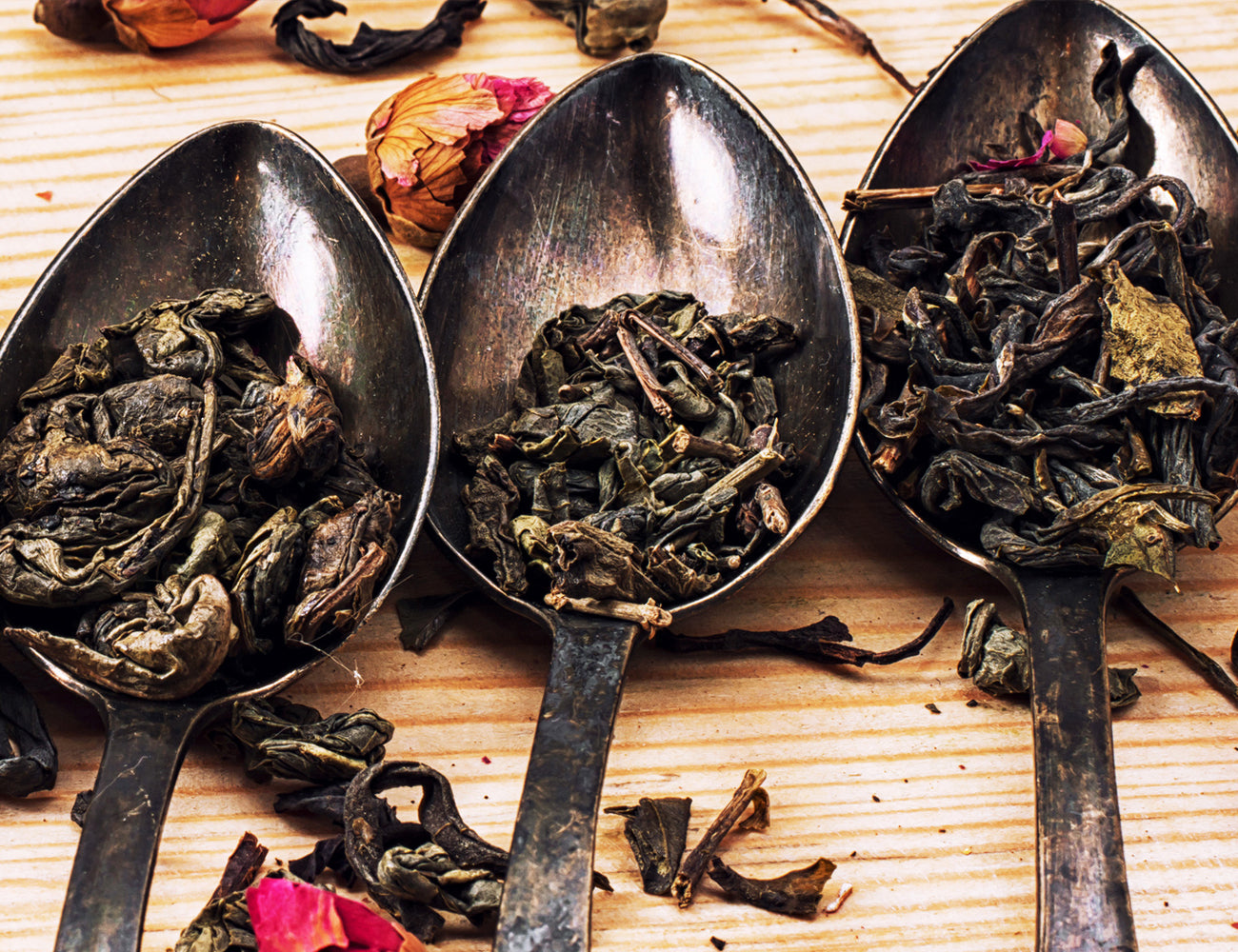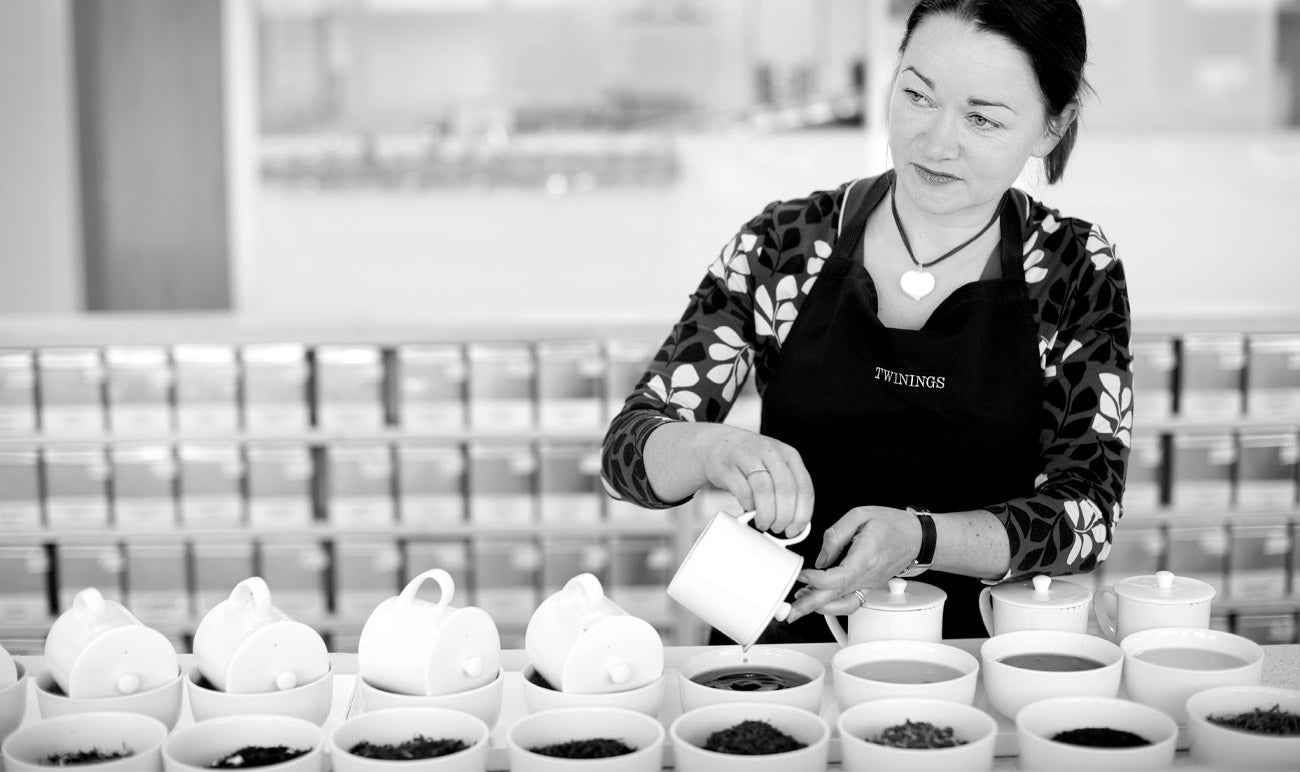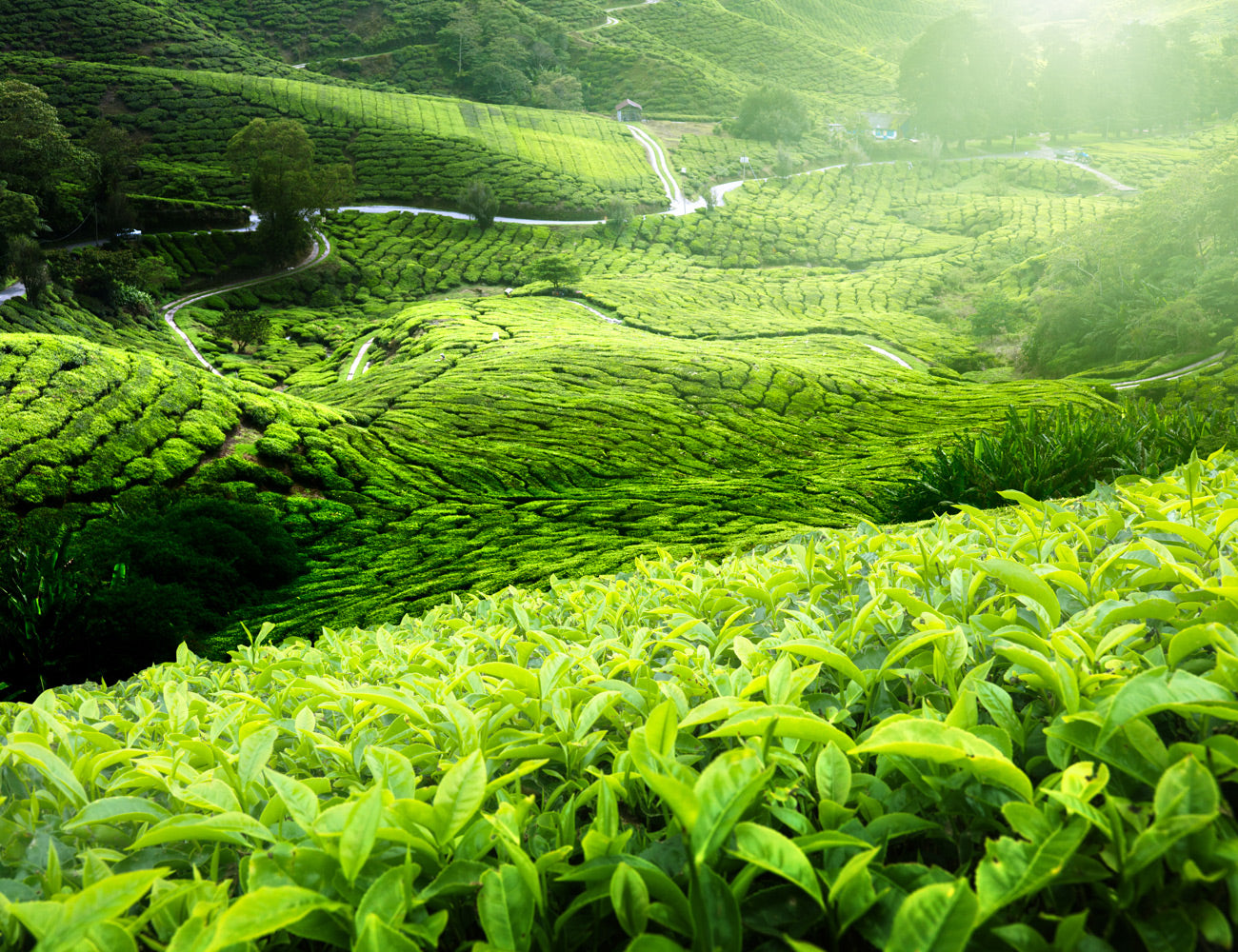How Is Tea Made - It's A Process
Explore the journey of your cup of tea. Discover the process from leaf to cup, and learn how your Twinings tea is made with precision and expertise.
The Tea Factory
After the tea leaves have been plucked, the real production of tea begins. The leaves are first taken to a tea factory to be processed. These factories are usually very close to the tea gardens, so the leaves stay as fresh as possible.
There are only 24 hours between the moment the tea leaves are plucked and the minute they're packed up. But what happens during these 24 hours is crucial. And it's this process that determines the kind of tea it will form; will they be black, green or in-between? Caffeinated or decaff? There's no more important time in a tea leaf's life!


The next stage in the production of tea is the sorting process. Before they leave the tea factory, all the teas - black, green, white and Oolong - are graded and sorted.Because different-sized leaves brew at different speeds, the leaves are separated into batches of the same size.
Next, the leaves are classified by size, type and appearance. Different countries have their own systems for classifying tea. In China, teas are named by the region they came from, the way they were made and the type of leaf, or the legend behind the tea.
Then the teas are finally ready to be packed into foil-lined paper sacks or tea chests. These keep the leaves dry and protect them from the knocks and bumps of their onward journey.

The Tea Process
Did you know that black, green and white teas all start off pretty much the same? It's actually what happens during the tea production process that transforms them. Black tea is the most common tea, and there are two ways of making it: the 'orthodox' method and the 'CTC' method.
Read on to find out more about how tea is made using these two processes.

The Orthodox Method
The orthodox tea-making method is the most common. In this process, the tea leaves go through four stages: withering, rolling, oxidation and drying.
Withering
When they arrive at the factory, tea leaves are full of moisture. This first stage reduces their water content to about 60%−70%. This is done by laying out the tea leaves in big troughs on a wire mesh. Air is then passed over them, gently drying them out. This takes between 12−17 hours, leaving the leaves bendy and ready to be rolled.
Rolling
In the past, tea leaves were rolled by hand. Today, most factories place them on a rolling machine, which rotates horizontally on a rolling table. This movement twists and turns the leaves until they're thin and wiry looking. It also breaks them up, which starts the next stage: oxidation.
Oxidation
The oxidation process determines the tea's colour, taste and strength.
First, the leaves are put in troughs or laid out on tables. Then, they're left for between 30 minutes to two hours at a temperature of about 26°C.
During this time, enzymes inside the leaves react with the air around them, changing the leaves' colour from green to beige to a rich, deep brown. The colour indicates how oxidised the tea is and what its flavour will be like. To make a tea with a lighter taste, the oxidation process is stopped when the leaves are light brown. For a stronger tea, the leaves will remain warm until they're rich and coppery.
Drying or Firing
Once the leaves have been oxidised to the right level, they're passed through hot air dryers. This further reduces their water content to about 3%, leaving them ready to be sorted and packed

The CTC Method
The second way of making tea is called the 'Cut, Tear and Curl', also known as CTC tea, and was invented during the Second World War to try and increase the weight of tea that could be packed into a sack or chest.
As with the orthodox method, the leaves are first withered but after this, they are put through a series of rollers, covered in hundreds of small, sharp teeth. These teeth cut, tear and curl the leaves, producing tiny granules which are perfect for tea bags. After this, they go through the same oxidation and drying process as the orthodox method.

Green and White Teas
As well as black tea, we also make green tea, white tea and Oolong tea. Amazingly, black, green and Oolong teas all start off as the same leaves. So how do they get their distinctive flavour and colour...?
To make green tea, the oxidation process is completely left out. It's this lack of oxidation that gives green tea leaves their light, fresh flavour and delicate colour. So they are often pan-dried or steamed to kill any active enzymes which could react with the air.
After this, the leaves are rolled. Green tea leaves are rolled into all kinds of shapes: Gunpowder green tea is shaped like little bullets, while others are in tightly wound spirals, or long, curved arches.
If black tea was red wine and green tea was white, Oolong would be rosé! That's because its leaves are made from half or partially oxidised leaves. After the leaves have been wilted, they're either shaken in baskets, or wrapped in a cloth and rolled around to bruise the edges of the leaves, so only bits of the leaves react with the air.
The shaking and rolling continues until the leaves are 70% green and 30% brown - just enough oxidation to leave Oolong tea with a delicate, fresh colour and a fruity aroma.
To create the champagne-coloured, sweet-flavoured white tea, only the unopened buds and young leaves of the tea plant are used. Otherwise, the white tea making process is similar to that of green tea.

As you can see, there’s so much more that goes into every cup of tea than simply brewing! Tea making is an art form that requires a great deal of care and attention to craft the perfect cup of tea.








